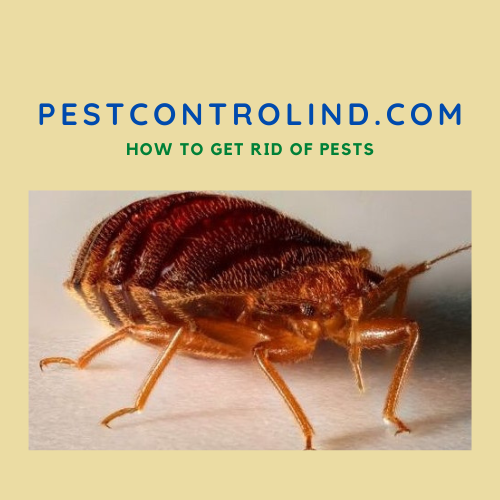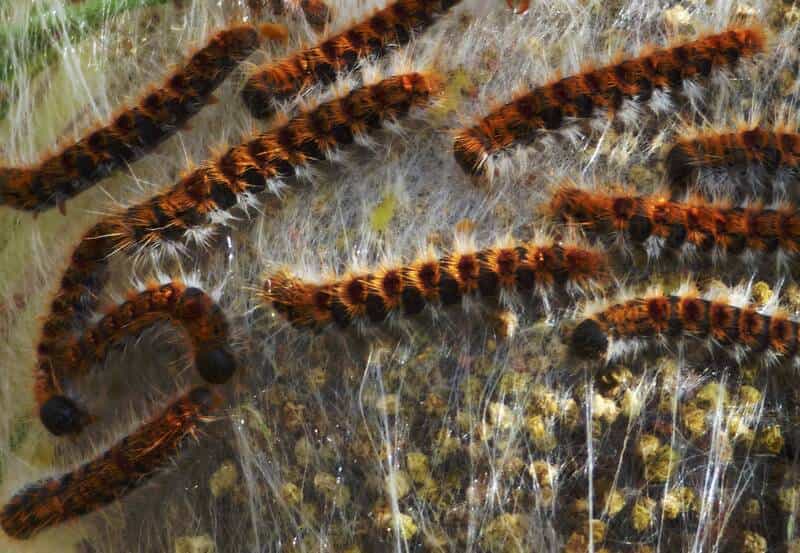How to kill processionary caterpillars on the ground? Are they dangerous? What other ways are there to get rid of them permanently? And what damage do they cause in gardens and forests?
Here is an article that answers all these questions.
I. Description of the processionary caterpillars
The pine processionary caterpillar is a moth larva. It can measure from a few millimeters to 4 centimeters when adult.
It gradually changes color during its development phase from brown-black with reddish spots on the sides and back to yellow on the underside.
The body of the caterpillars is often covered with a multitude of stinging hairs that can cause allergies and lesions of the skin, eyes, and mouth in animals and also in humans.
They are therefore dangerous and harmful insects for humans and animals.
II. How to kill processionary caterpillars on the ground?
1. Pick them up by hand
The only way to get rid of processionary caterpillars on the ground is simply to eliminate them physically and manually.
To do this, you must take the necessary precautions to avoid any risk or inconvenience, knowing that processionary caterpillars are relatively dangerous insects for you and your pets.
They are the cause of many medical complications for both humans and dogs, who are always tempted by this seemingly harmless insect procession.
While sometimes their hair that dogs lick out of curiosity can be the source of significant and painful itching.
This unconscious licking can sometimes lead to very serious lesions on the animal’s nose, tongue, and eyes. Sometimes it can even lead to the removal of part of the tongue.
Precautions to take:
- You should never touch them with your bare hands. It is rather recommended to wear thick gloves, a white mask and if possible a suit or at least thick clothes.
- Put on protective glasses even if there is no wind or breeze. Because the risk of having stinging hairs in the eyes is so unpleasant and harmful that it is better to avoid the risk.
How to proceed:
Stand-alone or in groups near the procession of caterpillars and pick them up one by one with your gloved hands. Then put them directly into thick paper bags.
Then close all the bags tightly.
At the end of the collection operation, incinerate all the bags at the place where you collected them, taking care not to let any escape.
Note that it is imperative not to touch the processionary caterpillars, even dead ones. Their hair is always stinging.
2. Burn the nests
The other most commonly used method of killing processionary caterpillars on the ground is destroying the nests and then burying them. This should be done on a cold day when there is no wind.
Because there is a risk that the wind will carry their stinging hairs which cause serious allergies in some animals, as well as in humans, as already mentioned.
Cover your body as much as possible as mentioned above. Then take the caterpillar nest, after having dropped it by sawing the branches, and drown it in a bucket of water mixed with a wetting agent for a few hours.
Then bury the nest in the ground or burn it after drying it.
3. Predators of processionary caterpillars
There are many predators, but unfortunately, the untimely use of insecticides has greatly reduced their population.
Among the most important insects, the calosome, a kind of beetle 2 to 3 cm long, whose mandibles are enough to destroy the caterpillars.
The cuckoo and the chickadee are also fond of the larvae while some bats hunt these moths during the night, which considerably reduces the reproduction of the processionary caterpillars.
Among the best known, we have an insect called the calosoma. It is fond of larvae and caterpillars and has mandibles adapted for the task.
You can also add the cuckoo and the chickadee. A chickadee has the capacity to destroy 200 caterpillars per day.
This makes it a real solution in the fight against these caterpillars.
4. Traps
Set up traps for moths by baiting them with pheromones. The period from mid-June to mid-September is more recommended for this method.
There are also traps that are placed around the trees to capture the caterpillars that descend from the tree to another. Then they must be destroyed, either by burning or burying them as indicated above.
5. Insecticides
The use of insecticides is also a radical solution to destroy caterpillars thanks to the toxins they inject into the nests.
III. Are processionary caterpillars dangerous?
Processionary caterpillars are dangerous because they can defoliate trees almost completely.
Indeed, they weaken the trees and make them fragile and vulnerable to the attacks of other parasites and diseases.
Thus, several species of pine such as maritime pine, white pine, and Austrian black pine… are destroyed because of its action.
The processionary caterpillars are also dangerous because of the strong itching caused by the hairs when they touch the areas of the body such as the forearms, wrists, between the fingers…and other parts.
It is therefore prudent to avoid touching this caterpillar and old nests with bare hands. Walking in infested forests should also be avoided on days when the wind is blowing very hard.
IV. Damage caused by processionary caterpillars
Caterpillars can cause serious environmental damage by attacking trees. Indeed, trees can be attacked and the defoliation phenomenon causes a slowdown in growth.
As soon as the tree becomes weakened, it becomes more vulnerable to attacks from other insects or diseases that can go as far as causing the tree to dry out completely.
Processionary caterpillars can also cause damage to humans. They are covered with small stinging hairs and these hairs are also often present in the nests and can spread in the air carried by the wind.
Thus they can cause skin and eye problems, respiratory problems, and allergies in humans.
For domestic animals such as dogs and horses, the worries can be more serious.
They can cause euthanasia of the dog’s tongue due to necrosis. They are therefore natural enemies.
V. Some precautions to take before killing processionary caterpillars on the ground
We remind you that it is necessary to be very careful and to take the necessary precautions before trying to handle the nests of processionary caterpillars and touch them.
The simple fact of approaching them triggers the release of thousands of highly allergenic hairs containing irritating toxins and can become embedded in the epidermis, mucous membranes, and respiratory tract, causing respiratory problems, redness, itching, and lesions.
Therefore, avoid shaking or manipulating the nest whether it is occupied or not. You should at least put on a mask covering the eyes, nose, and mouth and a suit that will cover the face, neck, hands, and other body parts.
Useful Links:
Range-Expansion in Processionary Moths and Biological Control

